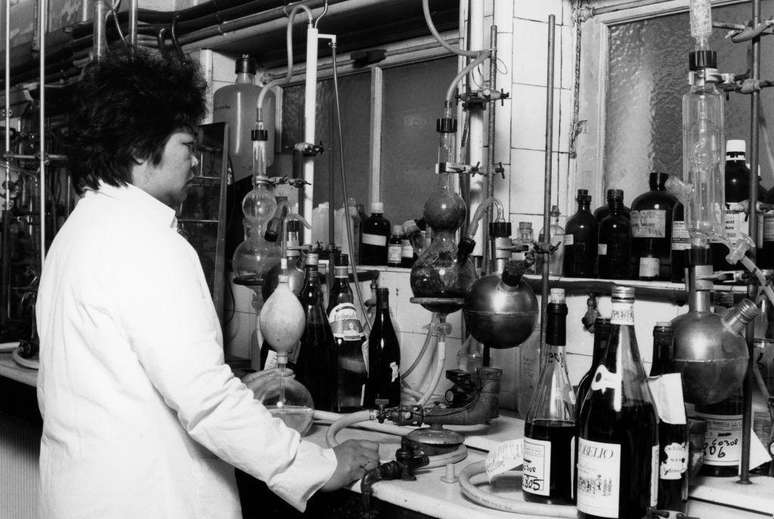The company confirmed the presence of lead in the composition of its cups, but denied the health risks. Read more on the topic here!
The promise that the drink will remain cold, together with a range of selectable colors for the container’s lining, have contributed to making the Stanley Cup an element of desire and even a status symbol at meetings and barbecues.
However, more recently, the product has returned to the debate, due to the controversy that the thermal mug contained in its composition, which could compromise the health of those who own the items.
The debate began after cup users in the United States posted videos on social media showing the results of purported rapid lead detection tests.

After all, is there lead in the Stanley Cup?
The manufacturer of the cups confirmed the presence of metal in the composition of the products. But according to the company, the consumer does not come into contact with lead, since there is a stainless steel lining.
A spokesperson for US mug maker Stanley sent a statement to CNN explaining that “some lead” is used as part of the mug’s vacuum insulation process, but the product is covered in a layer of stainless steel that protects the cups from consumers from the display. to the material. Manufacturers emphasize that there is no lead that comes into contact with consumers.
Although the manufacturer guarantees that, at the time of delivery, the product does not present health risks, experts warn that, throughout the period of use, consumers must pay attention to the integrity of the thermal mug, in particular the lining that insulates lead, to avoid any risk of exposure to the metal.
Risks related to lead
Lead is a toxic metal that affects people of all ages, especially young children, as it impacts brain development. The metal is heavy and cannot be digested by the human body, so any direct contact, whether through inhalation or ingestion, can affect the body. “There is no level of lead exposure that is free from harmful effects,” underlines a publication from the Ministry of Health.
The metal can impact several systems of the human body, such as the cardiovascular, gastrointestinal, hematological and neurological systems. Contact with the product can lead to neurobehavioral changes, such as memory changes, depression, hostility and insomnia. Furthermore, the product can influence visual-motor coordination.

Why lead in Stanley Cups can be dangerous
Counterfeit mugs
Although original Stanley mugs are not harmful to your health, you should be careful with copies of the thermal mug. The lack of control over the manufacturing process makes it impossible to know whether counterfeit Stanley cups contain lead and, if so, whether they are not in contact with the drink. See this article on how to find out if a Stanley mug is genuine or counterfeit.
Source: Terra
Ben Stock is a lifestyle journalist and author at Gossipify. He writes about topics such as health, wellness, travel, food and home decor. He provides practical advice and inspiration to improve well-being, keeps readers up to date with latest lifestyle news and trends, known for his engaging writing style, in-depth analysis and unique perspectives.








